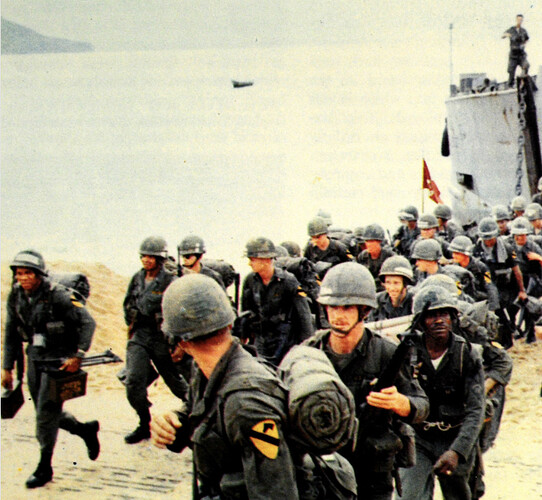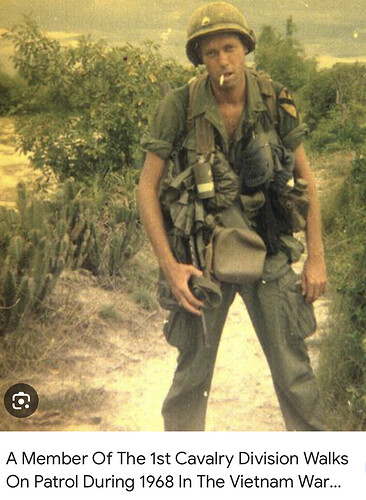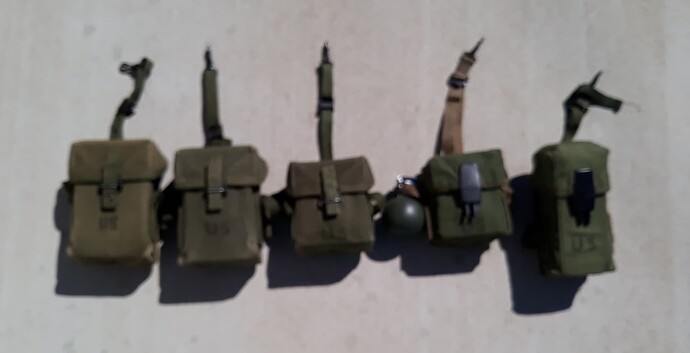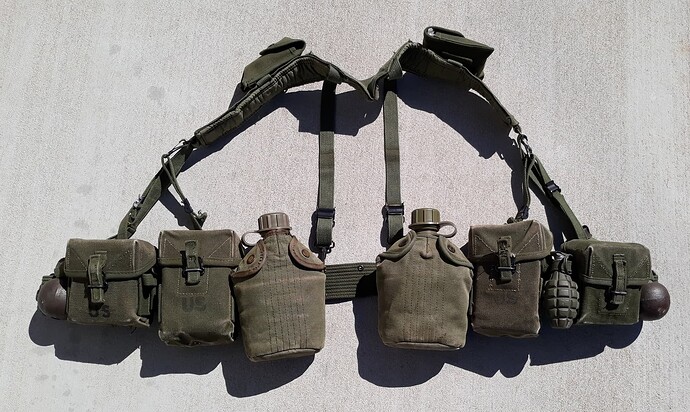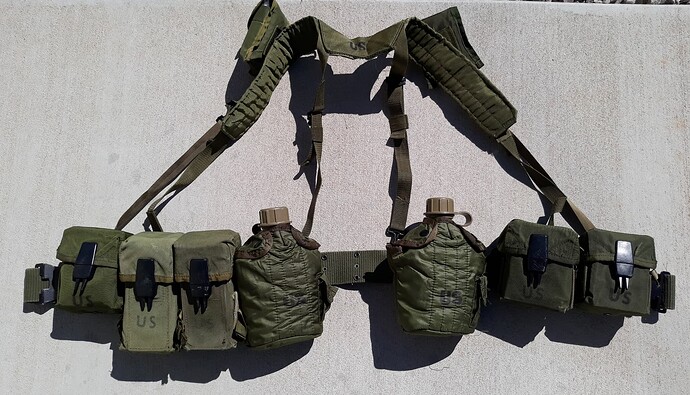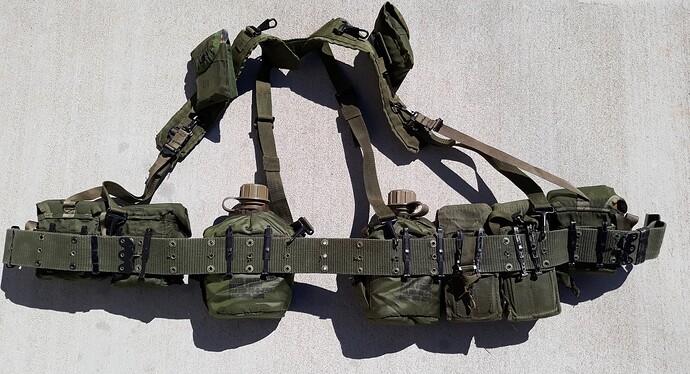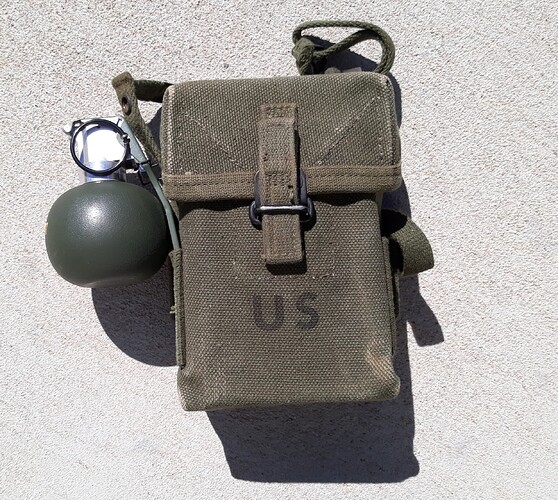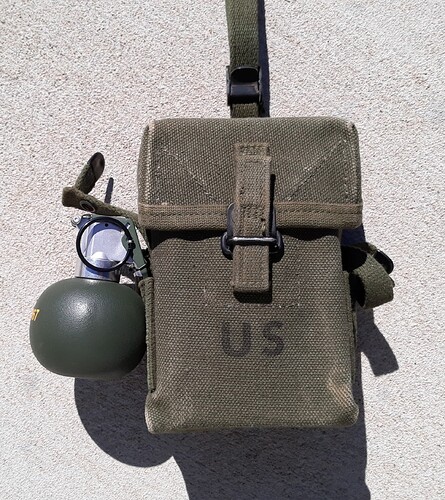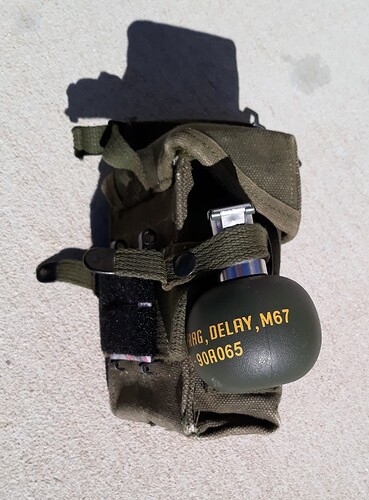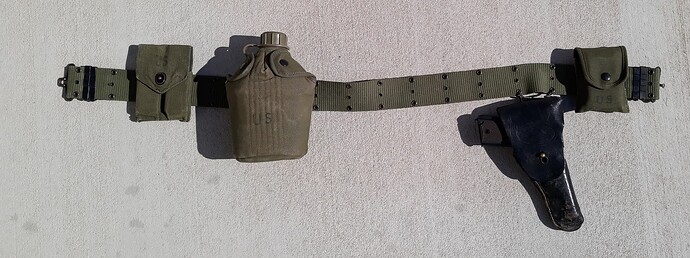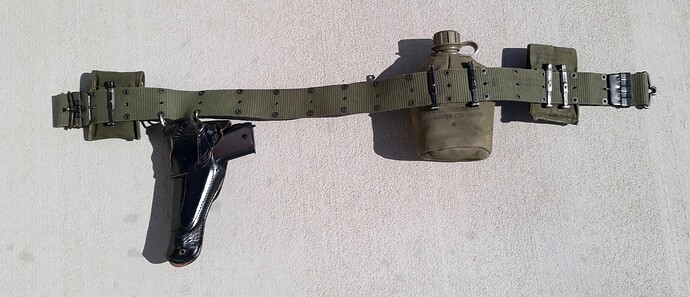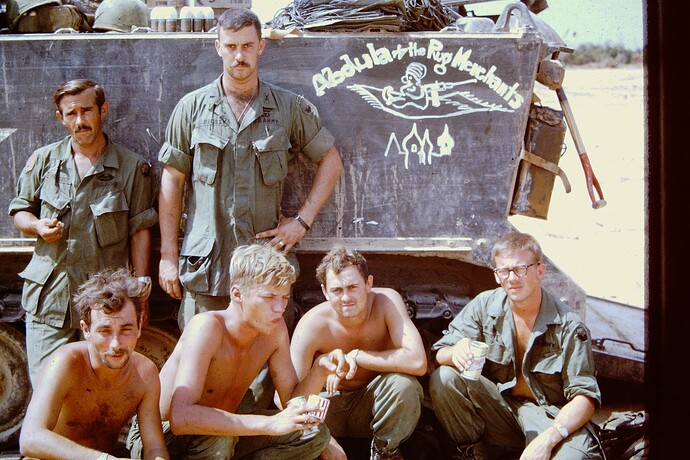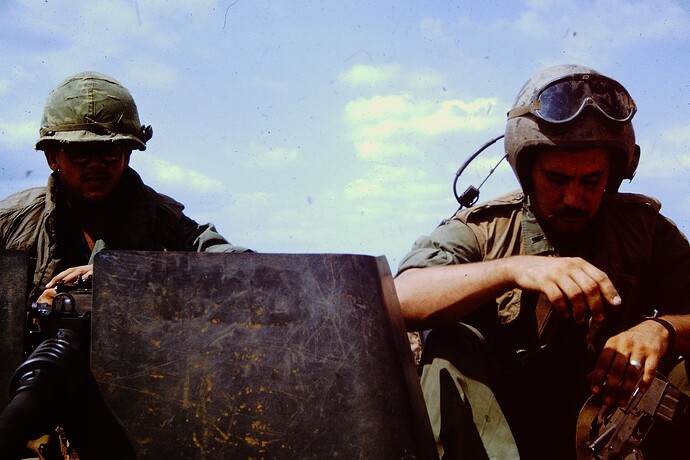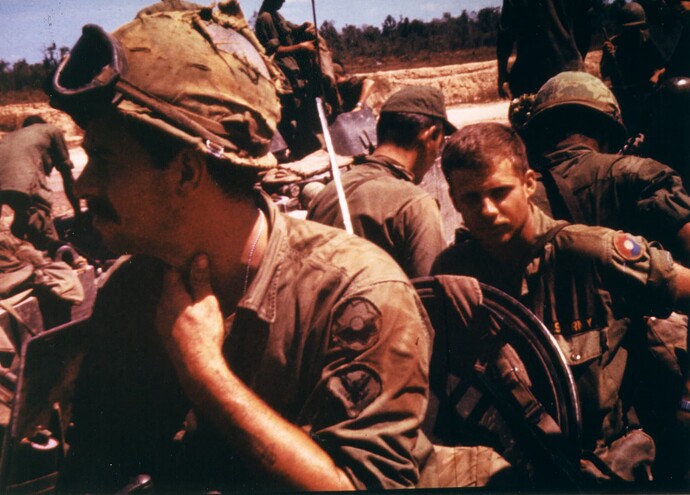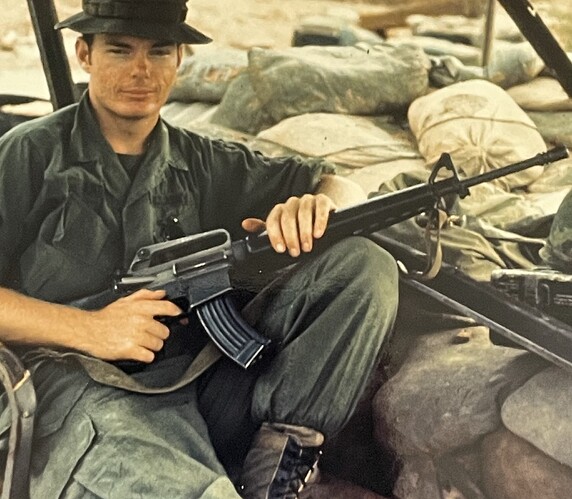Ryogugu,
Excellent job on the painting of the figures, but there are some things that I see that you may want to improve upon if you make and paint more figures of US personnel in Vietnam. SFCJJC already brought out some of those points. Basically, when depicting Soldiers in a war that lasted as long as Vietnam, Iraq, and Afghanistan had, there are going to be changes and an evolution of uniforms, equipment, and weapons throughout the course of the conflict, so when modeling such subjects, one needs to determine what time period, what unit, the location the unit was at during the chosen time period, and many other factors when choosing a subject.
In regards to uniforms, there were several that were worn by US forces throughout the span of the war ranging from the heavy cotton fatigue uniforms worn by US Personnel worldwide to the four versions of the tropical combat uniform (or jungle fatigues) that were in OG-107 as well as the ERDL camouflage pattern. While there were uniform regulations that dictated the wear of insignia and patches, local commands sometimes had to adjust uniform policies based on the environment and the supply situation. In regards to unit patches, early in the war color patches were common until subdued versions were made available. Ideally, the subdued versions would be used, but supplies of the subdued patches were limited at first, so it was not unusual to see a mixture of color and subdued unit patches among the Soldiers of any given squad, platoon, company, etc. For example, my father served in the 9th Infantry Division in Vietnam from December 1966 though November 1967 during his first tour. He had some uniforms that had subdued 9th ID patches and others that had color 9th ID patches. It just depended what was available at the time. And for those in field units like the Infantry units, they may depart on an operation wearing patches, but over the course of the operation they would get resupplied with new or laundered uniforms without any patches or insignia and like SFCJJC said, within your own unit, you know who the NCOs and Officers are so advertising it with patches and insignia that the enemy could use to determine who to shoot first wasn’t absolutely necessary. But, it rank insignia and patches were worn, there is a specific way that they would be placed on the uniform. Depending on the time period and the unit, one may see rank insignia sewn onto the sleeves for enlisted personnel or metal pin on rank on the collars, or during the transition period, you may see some Soldiers wearing their rank on their sleeves while other had pin on collar rank. In regards to officers, the insignia had a specific orientation on the collars. Your LT bars are oriented wrong. I will look for a photo of how officer insignia would be set up and post it for you for future reference.
Another thing I noticed about your figures are that the ammo pouches are placed too low on the belt. They actually ride higher than that. It is something that I see many modelers do with US field equipment and I think it may be because reference books usually show only the front of the pouches and not how they are actually attached to the belt. I will post some photos of that, too.
Something to keep in mind about US uniforms and equipment is that they are produced to certain specifications so each item will be of a uniform or constant size and shape. All pouches of a certain type will be the exact same size and shape. In regards to uniforms, the size and length of the uniform may vary because not everyone is the same size, but certain things like the size, shape, and location of the pockets will be the same no matter the size or length. If you look at my thread about Vietnam Figure Conversion you will see this illustrated by how I ensure that the pockets of all of my figures, and anything else that is of a standard size, shape, and location are all the same among all of my figures.
You are on the right track and your painting skills are pretty darn good, so once you have attained the knowledge of uniforms and equipment, I think you will be doing quite well. If you ever have any questions about anything related to this, you can ask me or some of the others on these forums who are knowledgeable about these matters. The good thing about this site is that people are willing to share knowledge to help everyone become better modelers.
Keep up the great work.
Cheers,
James

